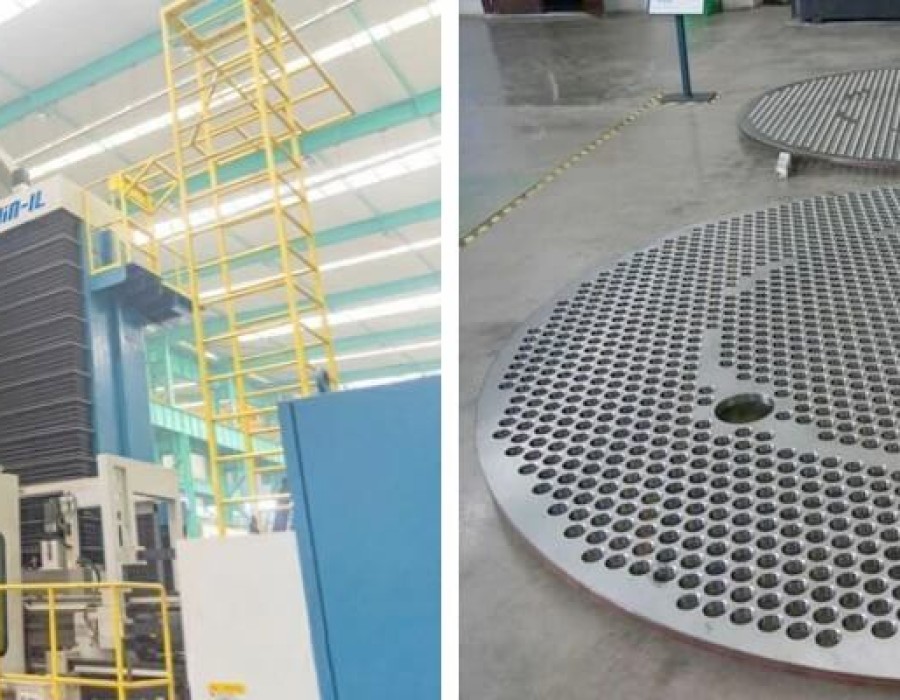What is condenser?
The condenser is one of the main heat exchange equipment in refrigeration equipment. The function of the condenser is to cool and condense the high-temperature and high-pressure refrigerant discharged from the compressor into liquid. The heat released by the refrigerant in the condenser is carried away by the cooling medium (water or air).
What is condenser Tube Sheet?
The condenser tube sheet is a component of heat exchange in various industries, including power plants, chemical plants, refrigeration systems, and HVAC (Heating Ventilating and Air Conditioning). Its main function is to provide safe connections for the condenser tubes and promote effective heat transfer. Therefore, the working state of the condenser tube sheet directly affects the performance and efficiency of the condenser. Let's explore in more detail the importance and application of condenser tube sheets.
In power plants
Firstly, condenser tube sheets are crucial in power plants, where they play a vital role in converting steam into water and facilitating the generation of electricity. The tube sheets offer structural support for the condenser tubes, allowing the transfer of heat from the steam to the cooling medium, typically water. This heat transfer process is essential for converting high-pressure steam into liquid water, which can then be recycled and reused in the power generation cycle.
In chemical plants
In chemical plants, condenser tube sheets are used for various purposes, such as cooling and condensing volatile substances, recovering valuable chemicals or solvents, and facilitating heat exchange in chemical processes. The tube sheets provide a stable platform for the condenser tubes, ensuring efficient heat transfer and enabling the separation and collection of desired substances from gas or vapor streams.
In refrigeration systems
Condenser tube sheets also find application in refrigeration systems, where they aid in the cooling and condensation of refrigerants. These systems rely on the expansion and compression of refrigerants to transfer heat from the conditioned space to the surrounding environment. The condenser tube sheets help facilitate this heat transfer process by providing a surface for the refrigerant to release heat, enabling its transition from a high-pressure vapor to a low-pressure liquid state.
In HVAC
In HVAC (Heating, Ventilation and Air Conditioning) systems, condenser tube sheets are utilized in air-cooled condensers. These systems use the condenser tube sheets to support the tubes through which the refrigerant flows. As the refrigerant releases heat to the ambient air, it condenses into a liquid state before flowing back to the evaporator, enabling the cooling and conditioning of indoor spaces.
The material of condenser tube sheets
To ensure the effective functioning of condenser tube sheets, proper material selection is essential. Factors such as corrosion resistance, strength, and thermal conductivity play a significant role in determining the suitable material for the tube sheet. Stainless steel, carbon steel, copper alloys, and titanium are commonly utilized due to their excellent corrosion resistance and mechanical properties.
Regular inspection and maintenance of condenser tube sheets are critical to identify any signs of corrosion, erosion, or leaks. Timely repairs or replacements can prevent system failures and ensure prolonged operational efficiency.
In conclusion, wuxichangrun condenser tube sheets are essential components in various industries, enabling efficient heat transfer, condensation, and cooling processes. Their proper selection, installation, and maintenance are crucial to maintaining optimal system performance, energy efficiency, and reliability.






Comments